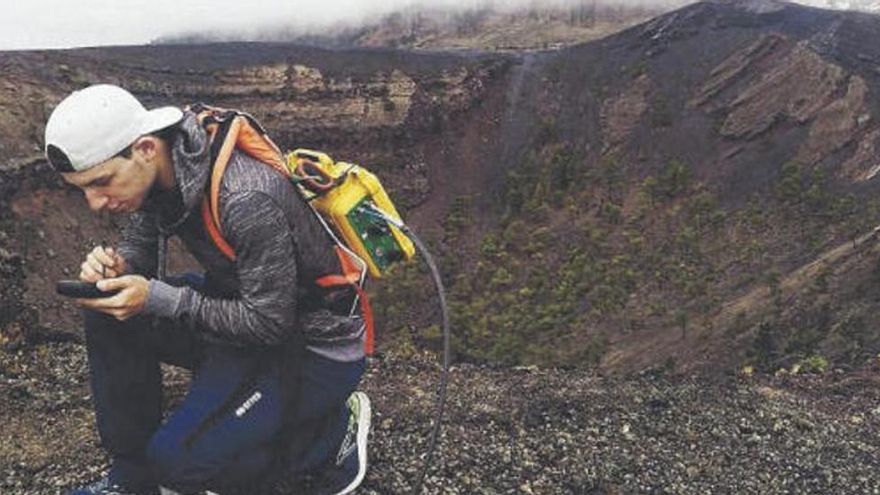
Tenerife is set to increase its renewable energy generation by tapping into the earth’s energy, aiming to reach 40% of the national average, doubling the current capacity from 20% (800 out of about 4,000 total megawatts). The majority of this energy comes from wind and photovoltaic sources. In the long run, the island aims for complete energy self-sufficiency (100% of consumption) through geothermal energy. This announcement was made by the president of the Council,Rosa Davila, who emphasized the collaboration between the public and private sectors involving the Technological Institute of Renewable Energy (ITER) and Disa. Both entities have secured 43.1 million euros, which accounts for 90% of the total project cost, from the Institute for Energy Diversification and Saving (IDAE) for the development of projects on the island in areas designated by the Government of the Canary Islands. The concessions are linked to three hydrothermal volcanic systems in the west covering fifteen municipalities, named Tenerife NWRZ, Tenerife NERZ, and Tenerife NSRZ.
ITER and Disa are planning to commence surface exploration next summer, expected to conclude in September or October. This will determine the precise locations for further surveys. It is projected that by 2025, the initial drilling will commence, with an estimated cost of ten million euros each. These operations are expected to have no adverse environmental impact and are calculated to reach a depth of 2.5 kilometers in order to confirm the “high probabilities” of discovering clean, sustainable energy. This initiative will not only reduce carbon footprint by emitting only water vapor instead of greenhouse gases but also reduce reliance on external sources for fossil energy, consequently addressing recent energy deficiencies.
This is the roadmap presented by Dávila, the island’s counselor of Innovation, Research, and Development, Juan José Martínez, the director of Disa Renovables, Joaquín Gurriarán, the director of the Environment area of ITER, and the Volcanological Institute of Canary Islands (Involcan), Nemesio Pérez. Rosa Dávila emphasized that this signals “a commitment to the future of Tenerife within our objective of achieving 100% renewable energy” and ultimately, “energy self-sufficiency”. She underscored the dedication of the Cabildo, through ITER and the prior work of Involcan, as well as Disa.
Excitement in the Air
Gurriarán expressed his excitement in advancing this collaboration and remarked that “Disa has been committed to energy for 90 years and has evolved from its initial focus on photovoltaic and wind to geothermal energy.” He described it as “clean, affordable, and sustainable” energy. Additionally, he revealed that an Icelandic group will join the project, bringing their knowledge and experience as a pioneering country in this field. Gurriarán estimated geothermal energy potential in the Canary Islands at around 800 megawatts. He also emphasized that it will complement other renewables and act as a natural energy reservoir, as explained by Pérez.
Juan José Martínez valued the public subsidy at 43.1 million euros (covering half the cost of the exploration phase if all areas are explored) and indicated that the investment could double to 86 million with private contributions in project development. He announced that the estimated cost of the pilot plant to harness energy through turbines, at a more advanced stage in the process, would be 170 million euros, aiming to produce 30 to 40 megawatts. Nemesio Pérez likened this endeavor to a football match, stating that “if you don’t play, you don’t know if you win or lose.” He also expressed confidence, indicating a “50% to 60% chance of success”. He cited the example of the Island of Sao Miguel in the Azores, which has increased its energy output to 40% from geothermal sources, highlighting that “Tenerife has the greatest potential in the country”.
Three Systems on the Island
Geothermal exploration linked to the volcanic-hydrothermal system, known as Tenerife NERZ, will encompass the municipalities of Arico, Fasnia, and La Orotava. Similarly, for Tenerife NWRZ, the research will be conducted in Buenavista del Norte, Garachico, Guía de Isora, Icod de los Vinos, Santiago del Teide, Los Silos, and El Tanque. Furthermore, the work related to Tenerife NSRZ will be concentrated in Adeje, Arona, Granadilla, San Miguel de Abona, and Vilaflor. This “renewable and cost-effective resource beneath our feet” harnesses the internal heat stored in the Earth’s crust to produce electricity sustainably. It is stable and available 24 hours a day, 365 days a year. Additionally, it is an energy source that minimizes land usage and has a significantly smaller environmental footprint compared to other sources. Geothermal resources are found at various depths, from hundreds of meters to several kilometers, and can be used to generate both thermal and electrical energy based on temperature. This natural resource of the future is already within reach.















